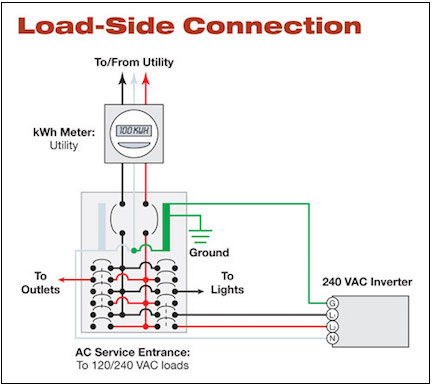
Navigating Grid-Tie Connection: Key Considerations
Grid-tie connections for renewable energy systems offer numerous benefits, but navigating this landscape requires careful consideration of various factors. Explore key considerations to ensure a seamless and efficient grid-tie connection.
Understanding Grid-Tie Connections
Grid-tie connections enable renewable energy systems, such as solar or wind, to connect to the existing electrical grid. This allows for the transfer of excess energy back to the grid, reducing reliance on traditional power sources and often providing financial incentives. Before diving into grid-tie connections, it’s essential to understand the basics and how they integrate with renewable energy systems.
Evaluating System Capacity and Energy Production
Assessing the capacity of your renewable energy system is a crucial first step. Understand the energy production capabilities of your solar panels or wind turbines. This evaluation helps determine the size of the grid-tie connection and ensures it aligns with the energy needs of your property or facility.
Choosing the Right Inverter Technology
Inverter technology plays a pivotal role in grid-tie connections. Selecting the right type of inverter—whether string inverters, microinverters, or power optimizers—depends on factors such as system size, shading conditions, and budget. Each technology has its advantages, and careful consideration is necessary to optimize energy production.
Grid Compatibility and Regulations
Before establishing a grid-tie connection, it’s imperative to ensure compatibility with the local electrical grid and adhere to regulations. Familiarize yourself with grid interconnection standards, utility requirements, and any permits or approvals necessary for connecting your renewable energy system to the grid. Compliance is essential for a smooth and legally compliant connection.
Monitoring and Control Systems
Implementing monitoring and control systems enhances the efficiency of grid-tie connections. Real-time monitoring allows you to track energy production, consumption, and grid interactions. Investing in a robust monitoring system provides valuable insights into system performance and helps identify any issues promptly.
Safety Protocols and Emergency Procedures
Safety is a paramount consideration in grid-tie connections. Develop and implement safety protocols for installation, maintenance, and emergency situations. Ensure that all personnel involved in the installation and operation of the system are trained in safety procedures to minimize risks and enhance overall system reliability.
Grid Outages and Backup Solutions
While grid-tie connections provide a reliable power source under normal conditions, planning for grid outages is crucial. Explore backup solutions such as battery storage systems or backup generators to ensure a continuous power supply during interruptions in grid service. This consideration enhances energy resilience and reliability.
Financial Considerations and Return on Investment
Evaluate the financial aspects of grid-tie connections, considering upfront costs, potential incentives, and the long-term return on investment. Explore available financial incentives, such as feed-in tariffs or net metering programs, which can contribute to the economic viability of your renewable energy system.
Environmental Impact and Sustainability
Assessing the environmental impact of your grid-tie connection is in line with the principles of sustainability. Renewable energy systems contribute to reducing carbon footprints, but it’s essential to evaluate the overall environmental benefits and consider the life cycle of the components involved in the grid-tie connection.
Future Expansion and Scalability
Consider the potential for future expansion when planning a grid-tie connection. Evaluate the scalability of your renewable energy system to accommodate increased energy needs or additional components. Planning for future growth ensures that your grid-tie connection remains adaptable and efficient as your energy requirements evolve.
Seizing Grid-Tie Connection Considerations for Success
In conclusion, navigating grid-tie connections requires a comprehensive understanding of the technology, regulations, and system dynamics. By carefully considering factors such as system capacity, inverter technology, safety protocols, and financial implications, you can optimize your grid-tie connection for efficiency and sustainability. For more insights and resources on grid-tie connection considerations, visit Grid-Tie Connection Considerations.





